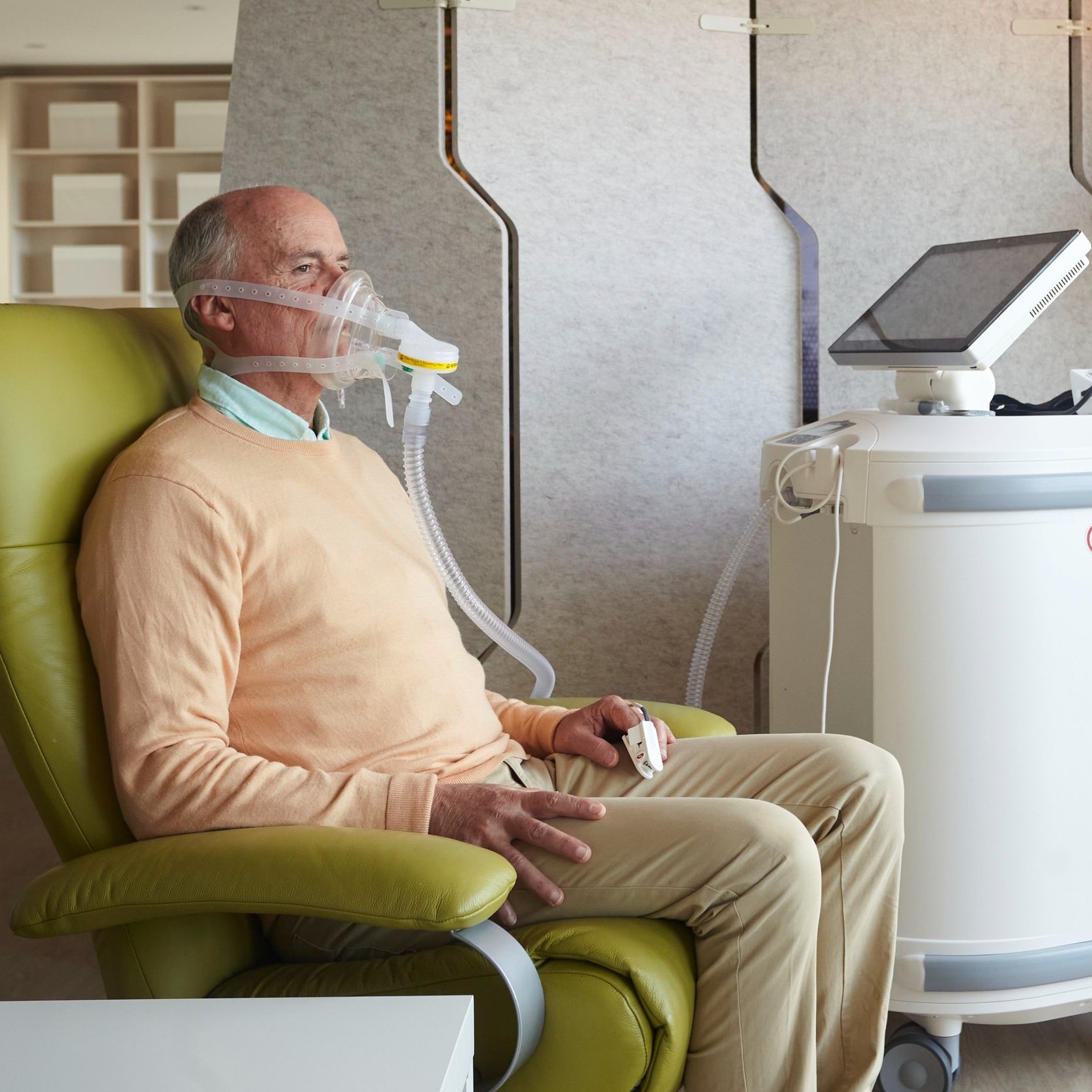
ReOxy Interval Hypoxic Hyperoxic Treatment (IHHT)
ReOxy Interval Hypoxic Hyperoxic Treatment (IHHT) is an innovative technology designed to promote physiological adaptation and resilience via hypoxia.
How Does ReOxy IHHT Work?
ReOxy utilizes individually dosed levels of reduced-oxygen (hypoxic) gas mixtures for intervals of several minutes alternated with periods of normoxic or hyperoxic air, exposing the body to short, sharp bursts of hypoxia.
The reduction in oxygen levels stimulates the activity of protective proteins (eg. antioxidant enzymes, heat shock proteins, repair enzymes) and increases endothelial production of nitric oxide (NO) while also preventing NO overproduction in the brain, leading to hypoxia adaptation and new defensive mechanisms formation. It also stimulates epigenetic changes and increased expression of genes that allow adaptation to altitude.
This therapy is delivered using a hypoxicator, allowing for precise dosage monitoring and oxygen levels to be reduced safely.
What to expect:
Session: During a IHHT session you sit comfortably and breath oxygen through a mask. Levels are gradually reduced to simulate high-altitude conditions followed by intervals of increased oxygen levels to enhance cellular oxygenation and recovery.
Monitoring: A pulse oximetry sensor constantly measures oxygen saturation levels and our technicians will guide you through each step, ensuring safety and effectiveness.
Duration: Each sessions typically lasts for 45 minutes.
ReOxy IHHT targets:
Better repair and healing of cells, tissues, and organs
Reduced oxidative stress and inflammation
Improved mitochondrial function
Reduction in blood pressure and heart rate
Improved blood circulation
Enhanced memory and slowed cognitive decline
Positive effects on sleep, depression, and anxiety
Increased tolerance to stressors and toxic chemicals
Improved adaptation to altitude
Possible risks and contraindications:
Intermittent hypoxic training contraindications apply to people not well enough to withstand any degree of hypoxia due to significant underlying cardio-respiratory compromises, including uncontrolled hypertension, arrhythmias, acute ischaemia of the heart, pulmonary conditions such as COPD and severe asthma, pregnancy, severe anaemia and recent surgery.
IHHT possible effects are related to poor tolerance of transient hypoxia, which is brief and reversible, this includes headaches, dizziness, light headedness, hypertension, fatigue and muscle soreness. People should discuss these potential risks with their healthcare provider before commencing sessions.
For more information:
https://www.aimediq.com/method-overview/
https://www.aimediq.com/physiological-effects/
Zhang Q, Yan Q, Yang H, Wei W. Oxygen sensing and adaptability won the 2019 Nobel Prize in Physiology or medicine. Genes Dis. 2019;6(4):328-332. Published 2019 Oct 19. doi:10.1016/j.gendis.2019.10.006 https://www.ncbi.nlm.nih.gov/pmc/articles/PMC6889041/
Uzun AB, Iliescu MG, Stanciu LE, et al. Effectiveness of Intermittent Hypoxia-Hyperoxia Therapy in Different Pathologies with Possible Metabolic Implications. Metabolites. 2023;13(2):181. Published 2023 Jan 25. doi:10.3390/metabo13020181 https://pubmed.ncbi.nlm.nih.gov/36837800/
Serebrovska ZO, Serebrovska TV, Kholin VA, et al. Intermittent Hypoxia-Hyperoxia Training Improves Cognitive Function and Decreases Circulating Biomarkers of Alzheimer's Disease in Patients with Mild Cognitive Impairment: A Pilot Study. Int J Mol Sci. 2019;20(21):5405. Published 2019 Oct 30. doi:10.3390/ijms20215405 https://pubmed.ncbi.nlm.nih.gov/31671598/
Zhang Q, Zhao W, Li S, Ding Y, Wang Y, Ji X. Intermittent Hypoxia Conditioning: A Potential Multi-Organ Protective Therapeutic Strategy. Int J Med Sci. 2023;20(12):1551-1561. Published 2023 Sep 18. doi:10.7150/ijms.86622 https://pubmed.ncbi.nlm.nih.gov/37859700/
Ehrenreich H, Gassmann M, Poustka L, et al. Exploiting moderate hypoxia to benefit patients with brain disease: Molecular mechanisms and translational research in progress. Neuroprotection. 2023;1(1):9-19. doi:10.1002/nep3.15 https://pubmed.ncbi.nlm.nih.gov/37671067/
See our Reoxy fees here

